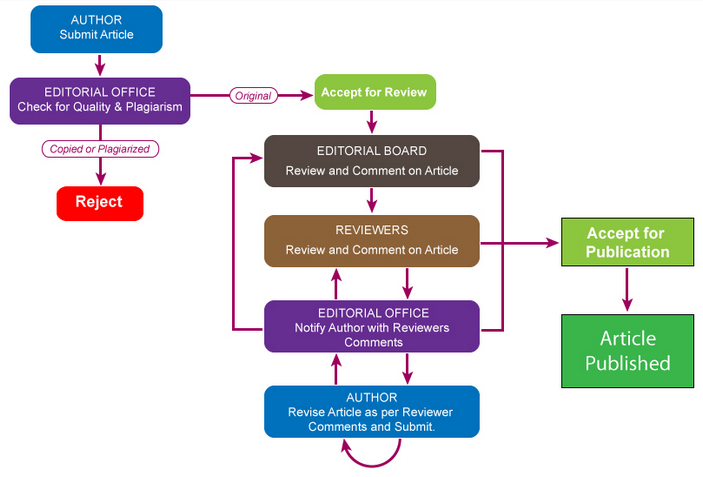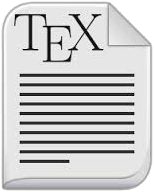Authors' Guidelines
Papers submitted to Clausius Scientific Press (CSP) must contain original material. The submitted paper, or any translation of it, must neither be published, nor be submitted for publication elsewhere. Violations of these rules will normally result in an immediate rejection of the submission without further review.
CSP's journals usually welcome the following types of contributions:
- New articles: These articles must have completely new research that proves to be a major contribution to the field of science. The subject area dealt with in the article should not have been published before. Substantial evidences backing the research work, findings and methodology can be present.
- Research articles: They must also contain fresh research works.
- Case reports: They may contain a detailed synopsis of diseases, their causes, occurrences in major parts of the world etc.
- Various other forms of articles include mini-reviews, commentaries, Debates, editorials, hypotheses and software articles, etc.
All manuscripts and any supplementary material should be submitted via CSP's Paper Submission System or to respective journal email address.
No article submission charges!
Contact us by our email:
Email: [email protected]
Article type:
One Column
Manuscript organization:
1. All manuscripts are expected to be prepared as a single PDF or MS Word document with the complete text, references, tables and figures included. Any revised manuscripts prepared for publication should be sent as a single editable Word document. LaTex paper is also acceptable for publication, but it should be in PDF for review first.
2. Manuscripts should be written in English. Title, author(s), and affiliations should all be included on a title page as the first page of the manuscript file, followed by a 100-300 word abstract and 3-5 keywords. The order they follow is: Title, Authors, Affiliations, Abstract, Keywords, Introduction.
Figure and table requirement:
3. All figures or photographs must be submitted as jpg or tif files with distinct characters and symbols at 500 dpi (dots per inch). Test your figures by printing them from a personal computer. The online version should look relatively similar to the personal-printer copy. Tables and equations should be in an editable rather than image version. Tables must be edited with Word/Excel. Equations must be edited with Equation Editor. Figures, tables and equations should be numbered and cited as Figure 1, Figure 2, Figure 3, etc. in sequence.
How to count page numbers:
4. Before submission or after acceptance, type your manuscript single spaced, and make all the characters in the text, tables, figure legends, footnotes and references in a single typeface and point size as 10 pt Times New Roman. This will save space, make it easier for reviewers and editors to process the submitted work, and contributes to slowing down global warming by using less paper.
References format:
5. All references should be numbered in square brackets in the text and listed in the REFERENCES section in the order they appear in the text. Below are some examples:
Journal Articles:
[1] García, J.I., Sepúlveda, S. and Noriega-Hoces, L. (2010) Beneficial Effect of Reduced Oxygen Concentration with Transfer of Blastocysts in IVF Patients Older than 40 Years Old. Health, 2, 1010-1017.
[2] Maganioti, A.E., Chrissanthi, H.D., Charalabos, P.C., Andreas, R.D., George, P.N. and Christos, C.N. (2010) Cointegration of Event-Related Potential (ERP) Signals in Experiments with Different Electromagnetic Field (EMF) Conditions. Health, 2, 400-406.
[3] Bootorabi, F., Haapasalo, J., Smith, E., Haapasalo, H. and Parkkila, S. (2011) Carbonic Anhydrase VII—A Potential Prognostic Marker in Gliomas. Health, 3, 6-12.
E-Journal Articles:
[4] Bharti, V.K. and Srivastava, R.S. (2009) Protective Role of Buffalo Pineal Proteins on Arsenic-Induced Oxidative Stress in Blood and Kidney of Rats. Health, 1, 167-172.
http://www.scirp.org/fileOperation/downLoad.aspx?path=Health20090100017_97188589.pdf&type=journal
Books:
[5] Verdu, S. (1998) Multi-User Detection. Cambridge University Press, Cambridge.
Edited Book:
[6] Prasad, A.S. (1982) Clinical and Biochemical Spectrum of Zinc Deficiency in Human Subjects. In: Prasad, A.S., Ed., Clinical, Biochemical and Nutritional Aspects of Trace Elements, Alan R. Liss, Inc., New York, 5-15.
Conference Proceedings:
[7] Clare, L., Pottie, G. and Agre, J. (1999) Self-Organizing Distributed Sensor Networks. Proceedings SPIE Conference Unattended Ground Sensor Technologies and Applications, Orlando, 3713, 229-237.
Thesis:
[8] Heinzelman, W. (2000) Application-Specific Protocol Architectures for Wireless Networks. Ph.D. Dissertation, Massachusetts Institute of Technology, Cambridge.
Internet:
[9] Honeycutt, L. (1998) Communication and Design Course.
http://dcr.rpi.edu/commdesign/class1.html
Reviewers play a pivotal role in scholarly publishing, and their valuable opinions certify the quality of the article under consideration. Peer review helps to ratify research, establishing a standard for evaluation within research communities.
Firstly, after a paper is submitted to a journal, a journal editor screens the manuscript and decides whether or not to send it for full peer review. Only after clearing the initial screening is the manuscript sent to two peer reviewers. Finally, journal editors or the journal’s editorial board consider the peer reviewers’ reports and make the final decision to accept or reject the manuscript for publication. The Generic Peer Review Process visualizes this.


Click to download paper template: .DOC Version .DOCX Version

Click to download paper template: .TEX Version

















